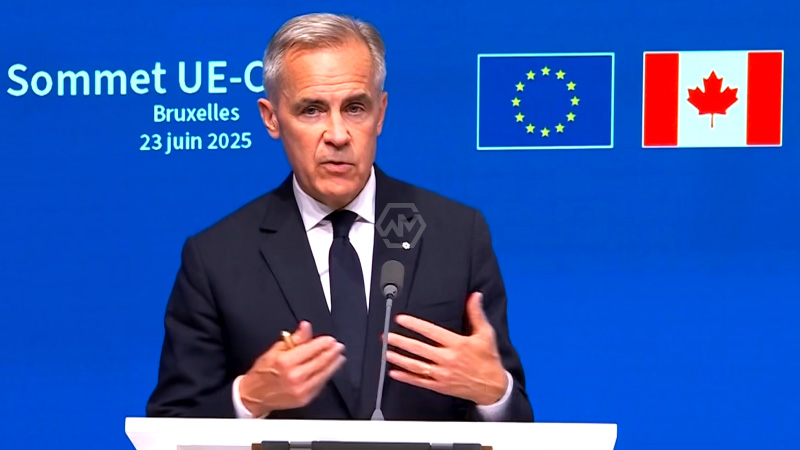- Canada’s new defence pact with the EU signals a shift from U.S. dependency.
- Experts warn of economic and political blowback, especially from a future Trump administration.
- Critical minerals, procurement delays, and U.S. retaliation are key risk factors in this strategic realignment.
Canada’s defence agreement with the European Union marks a bold attempt to diversify its military partnerships and reduce reliance on American defence firms, which currently supply nearly three-quarters of its military equipment.
On the geopolitical front, the shift may provoke backlash from the United States, particularly if Donald Trump returns to office. Trump’s protectionist stance and past confrontations with NATO allies suggest he could retaliate if American defence companies lose ground to European competitors.
Europe Over America? Canada’s Defence Realignment Sparks Strategic Tensions
Former national security advisor Vincent Rigby emphasizes the delicate balancing act Canada must perform as it reconsiders its commitment to Lockheed Martin’s F-35 program. Cancelling the remainder of the order in favor of a European fighter jet could be seen as a direct challenge to U.S. defence dominance, inviting political and economic retaliation.
Meanwhile, Canada’s ambition to contribute more substantially to NATO includes a dramatic increase in defence spending—up to 5% of GDP by 2035, amounting to $150 billion annually. While this move aligns with U.S. expectations for NATO contributions, it may not soften resistance if American firms are cut out of procurement deals.
The agreement with the EU also places new pressure on Canada’s domestic military industrial base. Experts like Retired Vice-Admiral Mark Norman argue that simply replacing U.S. dependence with European dependence fails to solve the underlying issue—Canada must instead strengthen its own production, streamline procurement processes, and modernize supply chains.
Adding complexity, the report flags provincial regulatory delays as a major hurdle to critical mineral exports—an essential input for defence manufacturing. These delays could undermine Canada’s appeal as a reliable supplier to Europe, forcing it to default back to U.S. markets when time-sensitive procurements are needed.
Canada’s pivot toward the EU for defence cooperation may chart a course toward greater autonomy, but without careful calibration, it risks igniting economic and diplomatic tensions with its most powerful ally.
“Between dependence and isolation lies the path of strategic autonomy.” — Anonymous strategist, adapted for modern geopolitical analysis.



